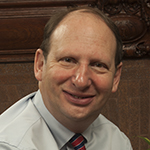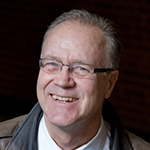Why do some St. Louis neighborhoods rebound while others languish?
That question will be at the forefront of a talk presented by Hank Webber, executive vice chancellor for administration at Washington University in St. Louis, and Todd Swanstrom, PhD, the E. Desmond Lee Endowed Professor in Community Collaboration and Public Policy at the University of Missouri-St. Louis.
The lecture, “Neighborhood Change in the St. Louis Region Since 1970: What Explains Neighborhood Success” takes place at 7 p.m. Thursday, Oct. 10, in the Lee Auditorium of the Missouri History Museum. It is presented in conjunction with the WUSTL Brown School Policy Forum and UMSL’s Des Lee Creating Whole Communities Initiative.
St. Louis has a rich history of neighborhoods, but there’s no question these areas have faced serious challenges in the past 40 years.
“St. Louis has many strong neighborhoods, but also areas of deep and concentrated poverty,” Webber said. “All you need to do is take a 10-minute drive and you can witness firsthand the disparity of our region. We’ll focus on why some St. Louis neighborhoods have rebounded, while others seem to be in a permanent state of decay.”
The lessons of St. Louis’ “rebound communities” also will be the subject of future “What’s Brewing” breakfast forums, sponsored by UMSL, that will take place in the neighborhoods, with local activists telling their stories of neighborhood resilience.

Webber has been WUSTL’s chief administrative officer since 2008. He is also a professor of practice at the Brown School and adjunct professor at the Sam Fox School of Design & Visual Arts. He teaches courses on community development, health policy, strategic management and social welfare policy. His research has centered on community development, mixed-income housing and the role of anchor institutions in urban development.
Prior to moving to St. Louis, Webber was the University of Chicago’s vice president for community and government affairs. One of Webber’s most notable achievements there was to promote the revitalization of the North Kenwood/Oakland and Woodlawn neighborhoods on Chicago’s South Side, which was accomplished by collaborating and forging relationships with the area’s community, religious, civic and political leaders. He also played a leading role in the establishment of the Urban Education Initiative, a University of Chicago effort which develops charter schools, offers teacher training and supports basic and applied research on educational issues.
 Swanstrom has a master’s degree from WUSTL in political science and a doctorate from Princeton University in politics. The author or co-author of six books and more than 25 scholarly articles, Swanstrom also served as a neighborhood planner for the city of Cleveland and as staff director of strategic planning for Albany, N.Y.
Swanstrom has a master’s degree from WUSTL in political science and a doctorate from Princeton University in politics. The author or co-author of six books and more than 25 scholarly articles, Swanstrom also served as a neighborhood planner for the city of Cleveland and as staff director of strategic planning for Albany, N.Y.
He is co-author of the prize-winning book, Place Matters: Metropolitics for the Twenty-first Century, rev. ed. (University Press of Kansas, 2005), which examines the relationship between urban decline and suburban sprawl. He is the Des Lee Professor of Community Collaboration and Public Policy Administration at the University of Missouri-St. Louis.
Focusing the resources of his endowment on strengthening community development in St. Louis, Swanstrom works closely with the Community Builders Network of Metro St. Louis, a coalition of community-based nonprofits.
Paul Brophy, former president of the Enterprise Foundation and a national consultant and expert on community-development issues, will moderate a Q&A following the presentation. Free and open to the public, the event will last about 90 minutes and will be followed by a reception.
The Missouri History Museum is located at Lindell and DeBaliviere in Forest Park. For more information, visit mohistory.org.